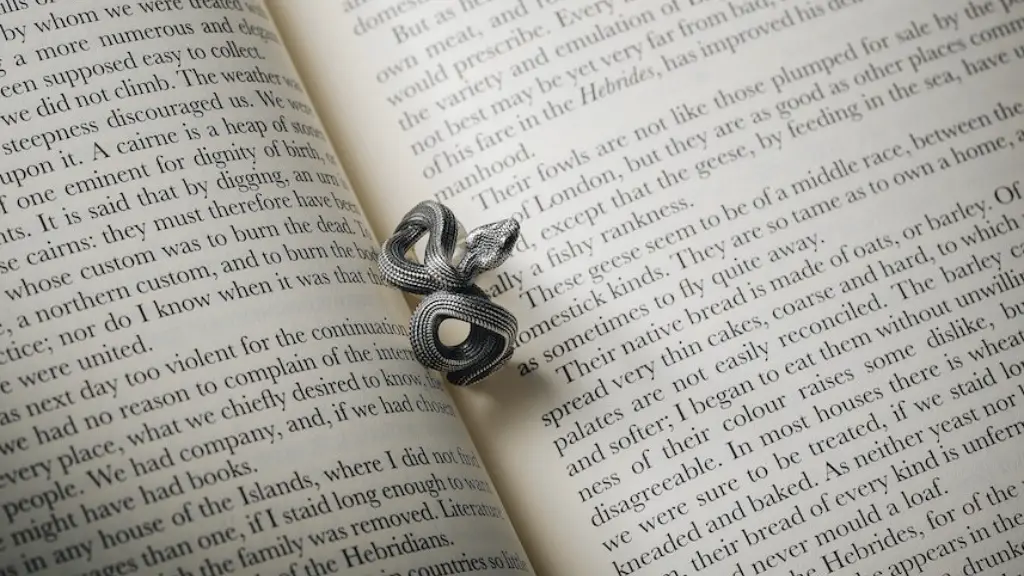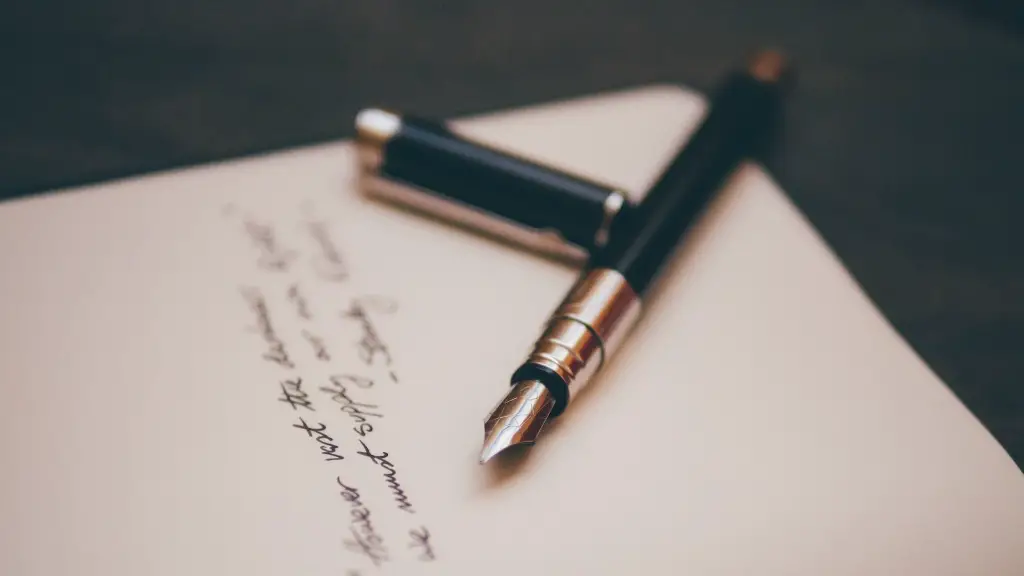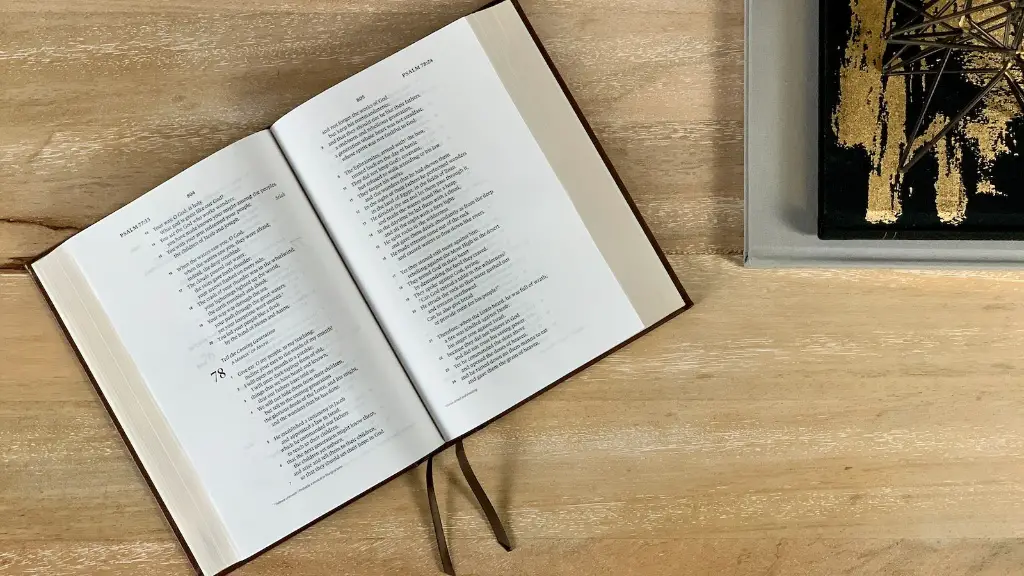Poetry is a form of art – it has its own language, structure, and rules. Paradox in poetry is a figure of speech that expresses an opinion or concept that is seemingly contradictory to the normal state of affairs. It is used to convey surprise, thought-provoking ideas, and create suspense. It typically involves two seemingly contradictory elements that are held together. Paradoxes are often used to create engaging stories and make readers think in diverse ways. It is an essential element of poetry and an effective technique for highlighting ideas and developing creative writing.
In figuring out what a paradox is in poetry, it’s important to consider the purpose of the poem. The author often utilizes the paradox to create a sense of surprise and exploration. For example, if a poem has a surprise ending, it could be resolved with a paradox that introduces a disconnect between the rising action and resolution. It can also be used to creatively explain a situation or concept that has multiple sides to it. Paradoxes can be used to force readers to consider what lies beneath the surface of words and engage with a poem on a deeper level.
The use of a paradox in a poem, can add an element of thought-provoking complexity. It can also add imagery and vivid emotion, as readers tend to recall how strong emotions are evoked. A common example of a paradox in poetry is a return to innocence, as it implies that innocence is degraded as life progresses and should be regained as one grows older. Another common application of a paradox in poetry is to compare something that is traditionally admired and revered, such as a beautiful sunset, with something dark and foreboding like a storm. This juxtaposition creates suspense and can lead the reader to a new line of thought.
Paradoxes can also be used to create humor and irony. Perhaps the most famous paradox in poetry is the famous ‘antinomy’. This occurs when a statement is both true and false. This paradox requires the reader to explore the contradictions that exist in the poem and the implications of them. it helps readers to examine their own beliefs and perspectives on a given topic.
Poets have been employing paradoxes for centuries in their writing and it can be found in poems from all around the world. From William Blake’s classic poem ‘The Tyger’ with its famous lines ‘What immortal hand or eye, Could frame thy fearful symmetry?’ to T. S. Eliot’s prolific works, such as his poem ‘The Love Song of J. Alfred Prufrock’, which has the antithesis ‘I should have been a pair of ragged claws, Scuttling across the floors of silent seas’ , the use of paradox in poetry is not only pervasive but also effective.
Paradoxes in poetry are also tools for teaching and can be used to illustrate and explore complex concepts. For example, in the poem ‘Education in War Time’ by Robert Frost, a paradox is used to describe how war affects education. Frost uses the paradox to compare the destruction that war brings to the sense of growth and learning that education can bring. This poem can be used to prompt readers to think about the contrasting forces of destruction and construction that exist in the world.
What is the Difference between a Paradox and Oxymoron?
An oxymoron is a figure of speech that joins two contradictory terms together to create a new meaning. For instance, ‘deafening silence’ or ‘bitter sweet’. While oxymorons have been used in poetry to create interesting effects, paradox is a much broader concept. While an oxymoron is a single joined concept often used as a punchline, paradoxes in poetry can often span an entire narrative and explore complex concepts.
How Is Paradox Used in Poetry?
As noted before, paradox in poetry is used to add complexity, suspense and emotion to a text. It plays an important part in problem-solving and has the power to surprise and engage the reader. As stated by American Poet, Kathleen O’Toole, ‘Paradox can also be what makes poetry so meaningful. The use of paradox helps to convey complex ideas by avoiding absolutes and pushing the reader to consider what lies beneath the surface. This technique can be effective in providing new perspectives on the world.’
Does the Use of Paradox Involve Risk?
Using paradox in poetry can create an element of risk and tension. Paradoxes can be hard to navigate and can challenge readers and even irritate them if used over-zealously. The poet must be careful to consider their audience and how a particular line of thought might be received. Writers should also be aware that some readers might not fully understand the paradox and can be perplexed by its meaning.
How Can Writers Use Paradox to Enhance Their Writing?
When writing a poem, writers should consider what paradoxes can add to their work. Poets can use paradoxes to succeed in creating suspense and adding complexity, as well as to evoke emotion in the reader. By using this figure of speech, writers can employ creative solutions to form stories, highlight ideas, or discuss abstract concepts. Poetry often challenges readers to think in new ways and can be an excellent medium for exploring ideas.
What Are Some Examples of Paradox in Poetry?
One of the most famous examples of paradox in poetry is John Donne’s ‘No Man is an Island’. This poem explores the paradox of solitude and connectivity, by saying that while we strive for individualism, we are in fact all connected to each other. Another excellent example of paradox in poetry can be found in the works of Emily Dickinson. In her poem, ‘A Narrow Fellow in the Grass’, she juxtaposes nature and terror, by describing a snake as both ‘frightful’ and ‘sublime.’ These two poems demonstrate the immense power of paradox in an effective and impactful way.
Can Paradox Be Used To Engage an Audience?
Yes, paradox can be an extremely effective tool for engaging an audience. Emily Dickinson used paradox in her poems to make her readers consider her message and to think in unconventional ways. Other poets such as Robert Frost and William Blake have used paradoxes to force readers to examine their own beliefs, and engage with their poetry in creative ways. Paradoxes can be used to enhance poetry and make readers see the world in a new light.
How Does Paradox Enhance Poetry?
Paradox has the power to turn seemingly mundane prose into works of art. It can be used to explore complex concepts and force readers to confront their own preconceived ideas. It usually involves a sudden reversal or a complete change of perspective that can surprise readers and lead them to a new line of thought. Paradoxes can enhance a poem by adding layers of meaning and complexity, as well as catalyzing powerful emotions in readers.



